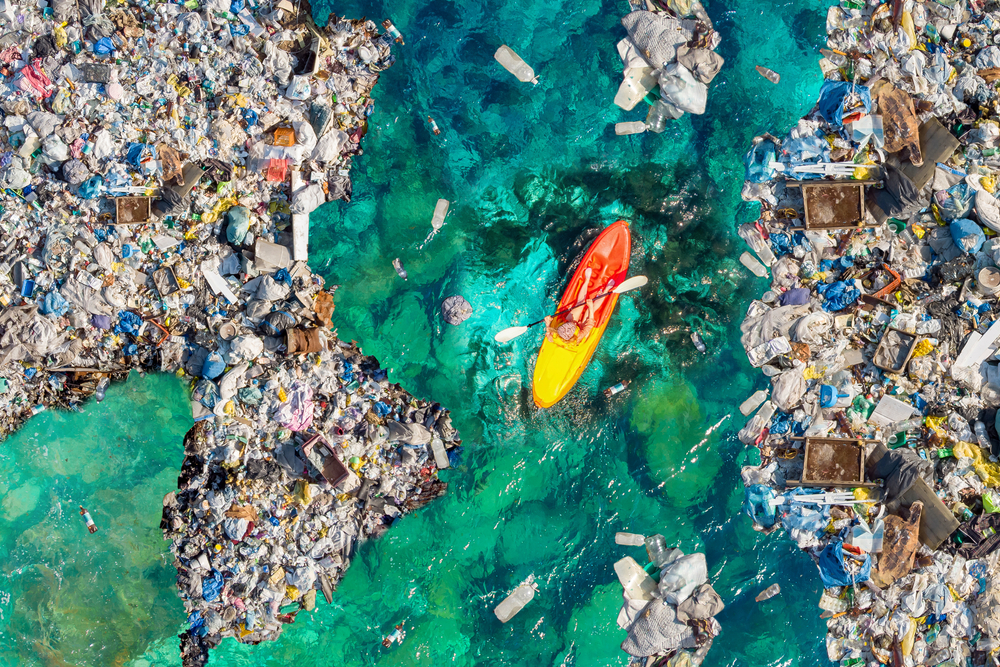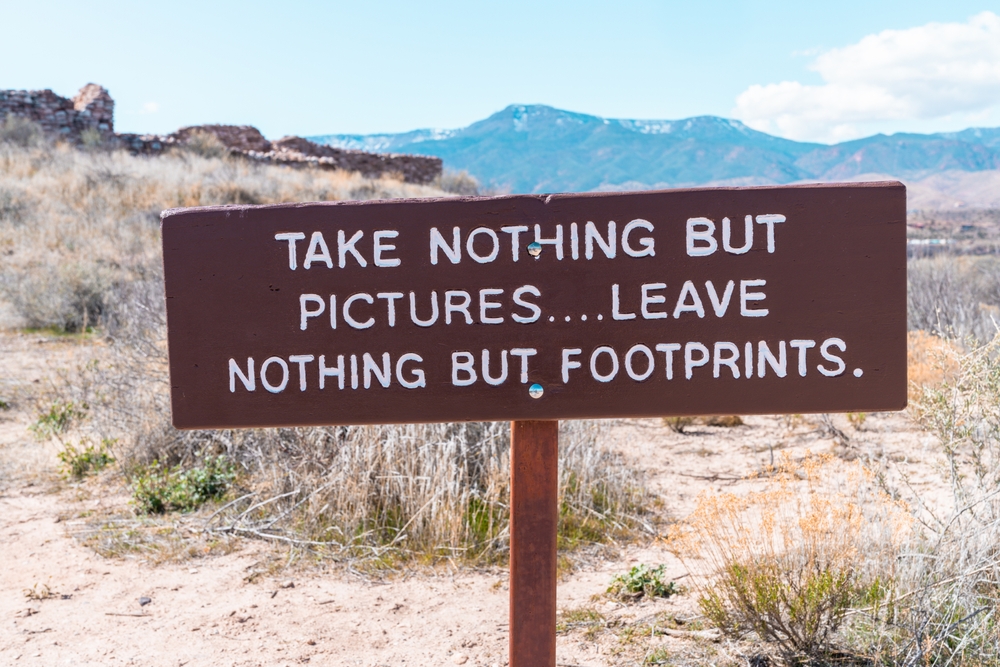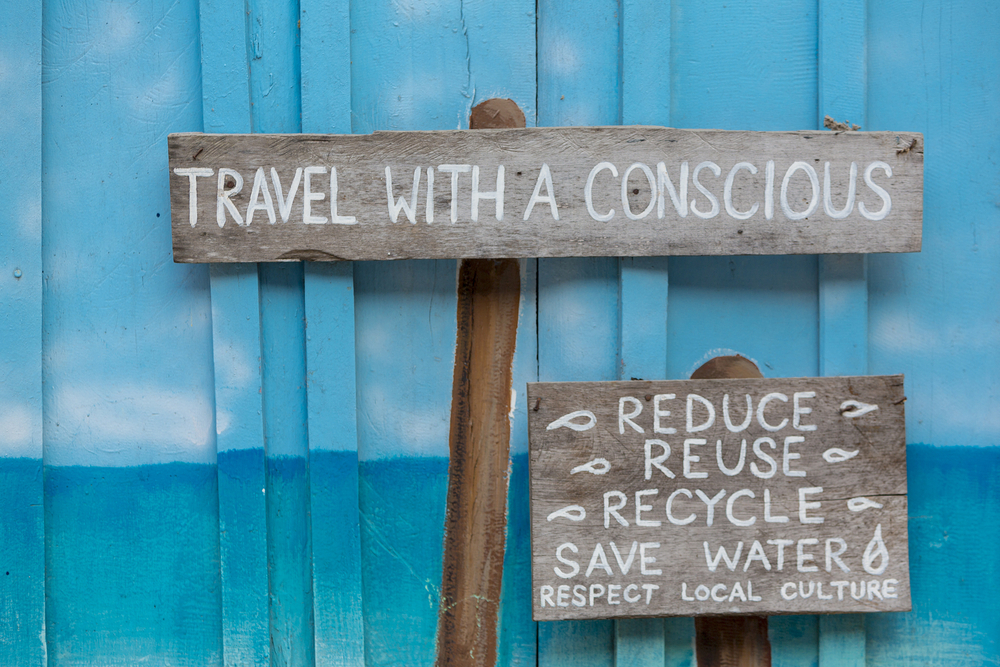Sustainable Travel: Leave No Footprint

Have you ever stopped to wonder how your thrilling adventures and exotic getaways are impacting the stunning places you visit? Picture yourself walking along pristine beaches, exploring mesmerizing rainforests, or immersing yourself in vibrant local communities—without harming them at all. Sounds incredible, right?
I’ve spent years exploring the globe, and through my journeys, I’ve realized firsthand how easily travel can unintentionally hurt our favorite destinations. Seeing beautiful beaches covered in plastic waste or overcrowded landscapes losing their natural charm can be heartbreaking. But there’s great news: we absolutely can travel the world sustainably, without sacrificing fun or convenience.
Is Your Adventure Hurting the Places You Love?

Ever arrived at a destination only to find it temporarily closed due to pollution, destruction of habitats, or overcrowding? You’re not alone. From Thailand’s Maya Bay, closed temporarily to save marine life, to Peru’s Machu Picchu limiting visitors—tourism sometimes unintentionally inflicts serious harm. Every footprint we leave behind, both literally and figuratively, carries consequences.
Several studies back this up: a world tourism report by the UN Environment Program found that tourism is responsible for almost 8% of global greenhouse gas emissions, litter problems, and habitat destruction. Shocking, isn’t it?
Sustainable Travel Can Be Easy (And Even More Rewarding!)
If you’re thinking sustainable travel sounds complicated or expensive, let me stop you right there. Embracing an environmentally responsible travel style is actually simpler—and more fulfilling—than you might imagine.
- Connecting deeply with local cultures
- Choosing experiences that give back to communities
- Exploring hidden local gems off the beaten track
You’ll find sustainable adventures create richer stories to share back home. And trust me, locals genuinely appreciate your care and respect towards their homes.
What Does “Leaving No Footprint” Really Mean?
Simply put, traveling with no footprint doesn’t mean disappearing into thin air; instead, it means consciously traveling without harming the environment or exploiting local communities.
- Respect wildlife: Keep your distance, don’t feeding animals, or disrupt their natural habitat. A study in Science Magazine shows invasive human interaction directly harms animal behavior.
- Reduce your waste: Avoid disposable plastics, leave the places you visit cleaner than you found them—always carry reusable bottles and bags.
- Minimize your environmental impact: Pick eco-friendly accommodations and transportation designed to lower your carbon footprint.
Maybe you’re asking yourself, “Does traveling sustainably really matter?” Stay with me, because what comes next might completely change the way you think about your adventures forever!
Why Sustainable Travel Matters So Much Today

Did you know global tourism has absolutely skyrocketed over the past few decades? According to the World Tourism Organization, international tourist arrivals soared from just 25 million in 1950 to over 1.5 billion in 2019! While exploring new places opens our minds and fills our hearts, the sheer increase in tourist numbers has had some unintended consequences.
Sadly, more visitors usually mean more pollution, littering, overcrowding, and depletion of local resources. I’ve personally visited stunning beaches in Thailand like Maya Bay, made famous by “The Beach” film, that had to close temporarily because huge visitor crowds damaged its ecosystem. Even iconic landmarks like Machu Picchu in Peru now limit the number of visitors to protect delicate historical ruins and wildlife areas.
- Littering: Beaches and national parks are facing plastic waste crises because travelers often unintentionally leave single-use bottles, food wrappers, and cigarette butts behind. A study done by the World Wildlife Fund revealed that roughly 8 million tons of plastic waste flow into our oceans every year—and tourism contributes significantly.
- Overcrowding: Barcelona, Venice, and Amsterdam attract millions annually, pushing locals out of their own communities. Venice famously struggles with “over-tourism,” creating uncomfortable living conditions for residents and damaging historic canals.
- Pollution & Resource Strain: Increased tourist numbers demand enormous amounts of energy, water, and food. It’s estimated that a single golf course in popular resort destinations can use as much water daily as 60,000 rural villagers might consume in the same timeframe!
- Habitat Destruction: Unplanned tourism development can lead to deforestation and habitat loss for indigenous wildlife. Orangutans in places like Borneo have been severely impacted by the rise of resorts and palm oil plantations aimed at travelers.
It’s More Than Just Recycling
Sure, ditching plastic water bottles and recycling your hotel room garbage are excellent first steps on your sustainability journey—but truly sustainable travel goes deeper. It considers three key pillars simultaneously: environmental, social, and economic.
Let me give you a clearer picture. Sustainable tourism aims to:
- Protect natural resources: Keep wilderness pristine and wildlife habitats intact.
- Support local economies: Choose hotels, restaurants, and tour operators that employ locals and reinvest profits into their communities.
- Respect local cultures: Honor the customs, traditions, and daily realities of those who call your travel destinations home.
Ultimately, sustainability isn’t just something we practice at home—it’s a mindset we carry everywhere we go to ensure the places we cherish remain vibrant for generations to come.
“Take nothing but pictures, leave nothing but footprints, kill nothing but time.” —Aliyyah Eniath
Sustainability is Now a Popular Choice on Booking Websites
The good news? Booking your travels sustainably is easier than ever! Big booking platforms have finally caught on too. My favorite example is Booking.com, which introduced their “Travel Sustainable” badge to help travelers quickly spot eco-friendly stays.
This program evaluates accommodations based on steps they’ve implemented—from eliminating single-use plastics and employing local, seasonal produce, to investing profits in sustainability projects and community initiatives. With a simple glance, travelers like you can feel confident their accommodation choice makes a positive impact.
I can’t tell you how great it feels to stay somewhere truly committed to sustainability—like an eco-lodge powered entirely by renewable sources, proudly employing locals, or even a city hotel that’s dramatically cutting down waste.
Now that we realize the depth and urgency of traveling sustainably, perhaps you’re wondering what practical, specific actions you can take? Curious about how to ensure your journeys protect rather than degrade our favorite places? Hang tight! You’re about to see an easy-to-follow solution, one tested and valued by responsible travelers and adventurers across the globe. Let’s keep reading…
The 7 Principles of “Leave No Trace” – Your Starting Point

One question I often hear from fellow travelers is, “What exactly are the seven principles of Leave No Trace?” Thankfully, these guidelines are straightforward, memorable, and incredibly effective—especially if you’re aiming for sustainable, respectful travel.
Let’s quickly break down each principle:
- Plan Ahead and Prepare – Anticipate challenges, know the local regulations, and bring sustainable essentials. Planning helps you reduce waste and avoid unexpected environmental impacts.
- Travel and Camp on Durable Surfaces – Stick to established trails, campsites, or hard surfaces. Avoid trampling fragile ecosystems like coral reefs, alpine meadows, or soft sand dunes; your footprints can make permanent damage in seconds.
- Dispose of Waste Properly – Remember that cringe-worthy scene of a beautiful beach littered with plastic bottles after an event? Don’t be the cause. Pack out everything you pack in, and dispose of waste responsibly.
- Leave What You Find – Think about the countless tourists wanting souvenirs from pristine beaches, ancient sites, or picturesque forests. Imagine if every visitor picked just one rock, shell, or flower; quickly, that spot loses its charm. Leave nature’s artwork behind for everyone to enjoy.
- Minimize Campfire Impacts – Uncontrolled fires damage acres of wilderness yearly. If you choose to have a campfire, stick to designated sites, keep it small, and thoroughly extinguish it once you’re done. Better yet, opt for low-impact alternatives like portable stoves.
- Respect Wildlife – Those irresistible animal encounters in tourism brochures might seem harmless until you realize the consequences. Studies show feeding, touching, or disturbing wildlife changes their behaviors, impacts reproduction rates, and can even shorten their lives. Photograph animals from a respectful distance—allow them to remain wild.
- Be Considerate of Other Visitors – Imagine finally reaching your dream destination, only to hear loud music or constant shouting. Respectful traveling means keeping noise and disruption minimal, ensuring a peaceful experience for everyone. As the famous saying goes:
“Take nothing but pictures, leave nothing but footprints, kill nothing but time.”
Apply These Principles Wherever You Go
While these Leave No Trace guidelines began in the context of outdoor adventures, I’ve discovered they’re equally brilliant for urban exploration or leisurely beach holidays. Can you imagine how different popular cities like Venice would look today if every traveler consistently minimized their waste, respected local culture and wildlife, and prioritized planning?
Aiming for sustainability isn’t limited to the backcountry or wild trails; it’s a mindset to practice everywhere, from busy city streets to secluded islands.
Small Actions Mean Big Changes
It’s easy to underestimate your individual impact—but imagine the exponential effect if thousands, or even millions, of travelers adopt these simple principles. According to a study published by the Global Sustainable Tourism Council, travelers’ collective choices result in substantial environmental changes, both positively and negatively. Imagine yourself as part of this empowering movement, directly participating in safeguarding the incredible destinations we cherish.
Are you curious about discovering exactly which type of sustainable traveler you could become? How would you even pick one? Let’s find out in the next step!
Types of Sustainable Travel & How to Pick Yours

Sustainable travel isn’t a one-size-fits-all approach. It involves choices that embrace environmental responsibility, local economies, and cultural authenticity. It’s about deciding what you’re most passionate about and making conscious, satisfying decisions. Let’s make this easy—here’s a quick look at three core types of sustainable travel and how can you pick one (or all!) for your next adventure.
🌿 Environmental Sustainability: Protect the Planet While You Explore
If breathtaking natural wonders spark your wanderlust, seeking environmental sustainability might resonate deeply. The goal? Exploring without harming the natural world around you.
- Reduce plastic use: Did you know approximately 8 million tons of plastic end up in our oceans each year? It’s tragic (World Economic Forum, 2020). Opting for reusable water bottles, bags, utensils, and straws can drastically reduce plastic pollution during your travels.
- Choose responsible wildlife experiences: Avoid attractions exploiting animals, such as elephant rides or animal selfies captive displays. Instead, opt for sanctuaries committed to conservation. One shining example is the Elephant Nature Park in Thailand, where rescued elephants are treated ethically and visitors learn genuine compassion.
- Minimize carbon footprints: Fly direct, use public transportation, or choose train travel when possible. According to the European Environment Agency, traveling by train produces up to 90% fewer emissions per passenger compared to flying. Small changes in transportation choices have massive effects.
“The Earth is what we all have in common.” — Wendell Berry
💵 Economic Sustainability: Put Your Money Where the Community Thrives
If local traditions, working directly with local people, and community development appeal to you, economic sustainability is perfect. This type of travel ensures your money benefits local economies rather than global conglomerates.
- Stay local: Choose family-owned guesthouses, eateries, and boutique accommodations so incomes go back to residents directly, helping them enhance their livelihoods. Think of it as paying back for those beautiful memories and authentic experiences locals help provide.
- Buy local products and crafts: Instead of mass-produced souvenirs, purchase handmade arts, textiles, or culinary offerings from local vendors. You’ll leave with something beautiful, meaningful, and economically empowering.
- Pick tours and experiences wisely: Look for activities operated by local residents, guides, or cooperative groups committed to reinvesting profits locally. Uganda’s Gorilla Trekking opportunities, for example, directly support communities around national parks through responsible tourism programs.
“Every traveler has the power to create positive economic impacts wherever they go.” — Sustainable Travel International
🌏 Social-Cultural Sustainability: Embrace and Respect the Cultural Gems
Are you drawn to traditions, languages, flavors, and stories unique to different cultures? If yes, choosing social-cultural sustainability travel means making respect and meaningful connection central to your experience.
- Respect customs & traditions: Quick research helps you grasp social etiquette before you arrive, avoiding accidentally offending locals. A respectful guest is always warmly welcomed!
- Learn from locals: Seek authentic interactions like cooking classes, storytelling sessions, or workshops run by community elders or artists. Offering local communities a platform to share knowledge is incredibly enriching for everyone involved.
- Protect cultural heritage: Support UNESCO Heritage Sites and projects designed to preserve local culture and landmarks. Visiting such destinations shows local authorities the value of preserving history and culture sustainably.
“Each culture is a colorful thread in the beautiful fabric of human life—honor and protect it wherever you go.”
Wondering how to integrate these sustainable travel practices quickly and effortlessly into every step of your journey? Stay with me—next, I’ll share practical tips that’ll help you from booking flights to unpacking your bag. Ready to discover how easy traveling sustainably can get?
Practical Tips: Traveling Sustainably Every Step of Your Journey

I know how it goes—you’re ready to set off on your next great adventure, fueled by wanderlust and visions of stunning landscapes and meaningful experiences. But because we care about protecting the beautiful places we explore, traveling smarter and with greater sustainability is essential. And—good news!—it can easily become second nature if you incorporate a few practical tips in every step of your journey.
Plan Ahead and Pack Smart
The road to sustainable travel literally begins with your suitcase. I can’t tell you how many times thoughtful packing has not only benefited the planet but simplified my journey, leaving more room in my bags—and budget—for souvenirs and memorable experiences!
- Consider Sustainable Tours: Before you even leave home, take a few moments to research eco-conscious tour companies. Platforms like GetYourGuide or Viator often have filters for eco-friendly and socially conscious tours.
- Ditch Single-Use Plastics: Pack your own reusable items—a sturdy water bottle, lightweight cloth bags, eco-friendly utensils, and even metal straws. Did you know Americans alone use over 50 billion plastic water bottles each year, and globally only around 9% of plastics actually get recycled? Let’s cut down that shocking number together!
- Switch to Solid or Eco-Friendly Toiletries: Shampoo bars, bamboo toothbrushes, and biodegradable soap bars are fantastic alternatives that minimize plastic waste.
And here’s some extra motivation:
“Every time you spend money, you’re casting a vote for the kind of world you want.” — Anna Lappé
I love that quote because it reminds me (and hopefully you too!) that every small decision contributes to the travel destinations we cherish.
Responsible Transportation Choices
Do you ever wonder how your travel methods impact your carbon footprint? You might be surprised: A recent study shows flights with layovers can significantly increase your emissions because take-offs and landings require vast amounts of fuel.
Here’s how to make transportation decisions that matter:
- Opt for Direct Flights: While sometimes a bit pricier, fewer layovers mean significantly lower climate impact.
- Take Trains or Buses Instead of Short Flights: European train systems like Eurostar, Thalys, and Interrail Passes make land travel enjoyable, fast, and eco-friendly. Bonus points: stunning scenery and local culture along the way!
- Choose Cars Wisely: Carpooling and shared rides minimize carbon emissions. Apps like BlaBlaCar connect travelers worldwide, making environmentally responsible transport an enjoyable and social experience.
- Consider Electric Vehicles: Renting electric vehicles is becoming simpler with companies like Hertz or Sixt increasingly providing EV models.
Accommodation Matters: Book Eco-Friendly Stays
Did you know your accommodation choice has a big impact? Thankfully, an increasing number of hotels and resorts are prioritizing sustainability, earning certifications recognized by platforms such as Booking.com‘s Travel Sustainable program. Selecting stays certified by reputable sustainability criteria means real, positive change—less water waste, reduced pollution, and better community outcomes.
Look for simple clues:
- Accommodation that uses renewable energy sources or emphasizes water conservation.
- Places that minimize waste and rely heavily on local products.
- Businesses that actively benefit their communities, guaranteeing your money supports the people who make your vacation unforgettable.
Your sustainable travel journey isn’t over yet—I’ve got some amazing real-life examples that’ll inspire your next adventure. Curious about the community-driven eco-lodges creating genuine change, or perhaps how Europe’s cities are transforming travel with green innovations? Let’s find out!
Spotlight on Great Eco-Conscious Travel Examples

Getting inspired to travel sustainably is much easier when you can see real-world success stories. Let me share with you two fantastic examples that truly show how mindful travel choices lead to powerful impacts—both environmentally and socially.
A Community-Driven Eco Lodge: Posada Amazonas, Peru
Hidden within Peru’s lush Amazon rainforest, Posada Amazonas eco-lodge isn’t just amazingly sustainable, but it’s also completely community-driven. The lodge collaborates directly with the local Ese’eja indigenous community, ensuring that most earnings stay local and support employment, education, and wildlife conservation projects.
This approach isn’t merely heartwarming—it’s impressively effective. According to a case study presented by Sustainable Travel International, since partnering with Posada Amazonas, the community has dramatically cut illegal logging and hunting, helping wildlife bounce back in the area. Guests also have immersive experiences that connect deeply with the people and lush rainforest.
“Travel makes one modest—you see what a tiny place you occupy in the world.” – Gustave Flaubert
Stories like Posada Amazonas are a powerful reminder of how our travels can positively shape both human lives and the natural world around us.
City Innovations: Green Travel Policies That Work
Sustainability isn’t limited to rural hideaways; several major cities also set inspiring examples. Take Amsterdam, for instance. Known globally for its cycling culture, the city actively prioritizes bikes over cars. Amsterdam’s bicycle-friendly endeavors reduce annual traffic-related CO₂ emissions significantly. Research from the European Cyclists’ Federation indicates cyclists in Amsterdam contribute to a whopping saving of approximately 100,000 tons of CO₂ yearly compared to if those trips were made by car.
Or look at Vienna, often declared one of the world’s most livable cities. Vienna invested hugely in public transit—90% of the city’s population lives within five minutes walk from efficient, eco-friendly public transportation. This smart urban planning keeps the city’s carbon footprint impressively small and makes tourists’ environmental impact minimal by default, without even trying hard.
- Amsterdam: Cycle-centric urban design reduces air pollution and CO₂.
- Vienna: Exceptional public transit network makes eco-friendly trips easy and stress-free.
Seeing these wonderful examples makes me wonder—why don’t all destinations do something similar? But hold onto that thought. Before you plan your next sustainable escape, there’s a crucial aspect you need to be aware of. Could you be unintentionally falling for a sustainable-travel mistake? Read on to uncover the surprising pitfalls travelers often overlook…
Avoiding Common Sustainable-Travel Mistakes

“Travel makes one modest. You see what a tiny place you occupy in the world.” – Gustave Flaubert
When we eagerly embark on a sustainable travel journey, we genuinely want to make a difference. But having been on countless adventures myself, I learned the hard way how easy it is to slip into tiny mistakes that unintentionally harm rather than help. So, let’s identify some common blind spots to ensure our sustainable travel efforts are genuinely impactful.
Overlooking Local Conditions and Needs
You wouldn’t pack snorkel gear for a trip to the Sahara, right? But that’s exactly the mistake we often make regarding sustainability.
Many travelers (myself included, initially!) assume that what works sustainably in one region applies everywhere. Unfortunately, sustainability isn’t universal—it’s heavily tied to local cultures, conditions, and immediate environmental challenges. What might be beneficial in one place could cause issues in another.
For instance, installing water filtration systems in places connected to pristine mountain streams won’t help locals—it’s not what they’re worried about. But that same filtration might be life-changing somewhere facing water scarcity.
- Know before you go: Do simple research to understand current local environmental conditions and primary sustainability needs.
- Check official or local resources first: Websites dedicated to regional sustainability or community tourism guidelines provide invaluable insights.
Adapting our actions by truly understanding local realities ensures we’re helping rather than causing accidental harm.
Empty “Greenwashing” Label Claims
Have you ever been excited booking a supposed “eco-friendly hotel” only to discover on arrival that aside from hanging a towel-reuse sign, there’s nothing remotely eco about it? Sadly, greenwashing—giving customers the false impression that a company or place is environmentally friendly—is alarmingly common.
Recent studies support this unsettling trend, revealing that a significant percentage of companies exaggerate their sustainability claims. A notable European Environment Agency report showed that nearly half of sustainability claims online lack evidence or sufficient proof.
So, how can you quickly spot genuine sustainability efforts amidst all the green-tinted noise?
- Seek trustworthy certifications: Look for transparent third-party certifications like Green Key, EarthCheck, Travel Sustainable badges (such as Booking.com’s program), or globally recognized labels.
- Look beyond labels: Don’t hesitate to check the hotel’s actual sustainability initiatives. Real eco-friendly hotels proudly exhibit their projects, like solar power sources or community recycling programs.
- Candid customer reviews: Fellow travelers who’ve discovered the genuine sustainable gems—or exposed fakes—share their experiences openly on review sites.
Being aware and asking questions beforehand helps ensure your journey is genuinely sustainable—not just painted green.
Curious about trustworthy tools and resources to easily assess sustainability before your travels? Stick around to discover my go-to apps and websites coming up next!
Recommended Sustainable Travel Resources to Keep Handy

Having the right tools and resources at your fingertips makes a world of difference when aiming to travel sustainably. You don’t need to become an overnight eco-expert—I’ve found that trusted resources and apps can quickly guide even new sustainable travelers toward smarter, greener choices.
Here are a couple of fantastic websites that I’ve personally bookmarked and recommend frequently:
- Leave No Trace: An authoritative resource directly from the Leave No Trace Center providing invaluable insights on sustainable travel practices. It’s filled with practical guidelines applicable wherever your adventures might take you.
- Globalyo: A comprehensive travel blog highlighting sustainable tips specifically tailored to responsible travelers wanting clear, actionable steps to minimize their environmental footprint on the go.
Useful Apps and Tools
Apps can simplify sustainable traveling significantly. Two I’ve personally tested and keep handy include:
- Green Globe App: This well-known app quickly connects you with certified sustainable accommodations worldwide. With robust verification processes, it removes the guesswork from choosing eco-conscious lodging and experiences.
- Refill My Bottle: This brilliant app helps you easily find locations around the globe where you can refill your reusable water bottle for free, drastically cutting plastic waste. Super simple, yet profoundly impactful.
Choosing one or two trusty resources and useful apps can instantly make sustainable travel the natural—and enjoyable—choice every time you travel.
But what’s really stopping many travelers from fully embracing these sustainable habits? Is it convenience, cost, or just a lack of awareness? Stick around, because next we’ll uncover some surprising truths about what might be holding you back and why sustainable traveling can be easier (and cheaper!) than you’d expect.
Time to Start Traveling Sustainably – What’s Holding You Back?

Let’s be honest—we all want to take better care of the beautiful places we visit, right? However, despite our best intentions, many of us postpone our journey towards sustainable travel because of perceived inconveniences or costs. But here’s the fantastic news: sustainable travel can be incredibly easy, budget-friendly, and genuinely rewarding!
Perhaps you’re still worried it’ll be complicated, expensive, or might limit your fun. I’ve been there myself, skeptical at first. But I promise you, once you switch to traveling responsibly, you’ll wonder what took you so long. And there’s solid evidence to back this up!
Sustainable Travel is Easier (And Cheaper) Than You Think!
Here’s a pleasant twist you might not expect: sustainable travel can actually save money rather than costing more. How? Think simple and smart. Bringing your own reusable water bottle means you’ll stop buying overpriced single-use bottles on the road. Using eco-friendly transport like public buses or trains instead of renting a car saves a hefty chunk of cash in vehicle rentals and gasoline. Even choosing locally-owned guesthouses or hostels typically costs less than chain hotels and keeps your spending within the community. It’s a double win!
- Reusable gear saves dollars: One reusable water bottle can replace hundreds of plastic bottles annually. That’s savings right there!
- Public transport can cut expenses: Trains, buses, or shared rides often cost way less than private cars or flights, putting some extra funds back in your pocket.
- Stay local, save cash: Smaller local hotels or homestays often provide a cozier, authentic experience without the price tags of big international chains.
I discovered firsthand as a frequent traveler that these little eco-friendly choices consistently added up to noticeable savings, leaving more funds for activities, local meals, and experiences. Trust me; sustainability and savings genuinely go hand in hand!
Joining Hands for the Future
When we care about how we travel, we’re investing in something bigger: protecting stunning destinations not just for ourselves, but for generations yet to experience them. It might sound lofty, but it’s so simple. Every mindful traveler helps to keep beaches pristine, mountains lush, wildlife thriving, and cultures vibrant for our kids and grandkids to admire someday.
Studies from sustainable-travel authorities like the Leave No Trace Center clearly demonstrate the positive difference millions of small, responsible actions can make. This isn’t just feel-good talk—it’s grounded in actual results: cleaner parks, healthier wildlife, stronger local economies, and happier communities.
Final Thoughts: Let Your Adventures Matter
So, here’s my friendly encouragement to you: embrace a style of travel that goes beyond mere sightseeing. Let your adventures truly matter and become part of a positive chain reaction. By choosing mindful practices, your every journey becomes a chance to contribute positively to earth’s beautiful destinations, ensuring those magical, inspiring places remain spectacular for everyone.
The joy of traveling isn’t just in seeing new places—it’s also about preserving their beauty and richness forever. So let’s get started and make sustainable travel not the exception, but our new normal. Together, we genuinely have the power to keep our planet beautiful and our adventures unforgettable!